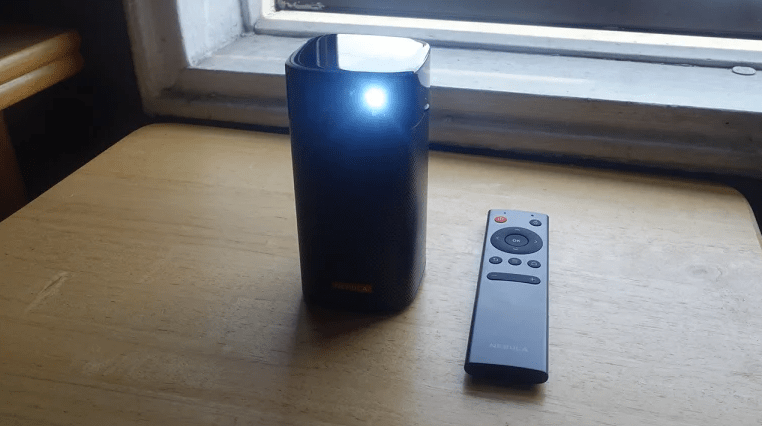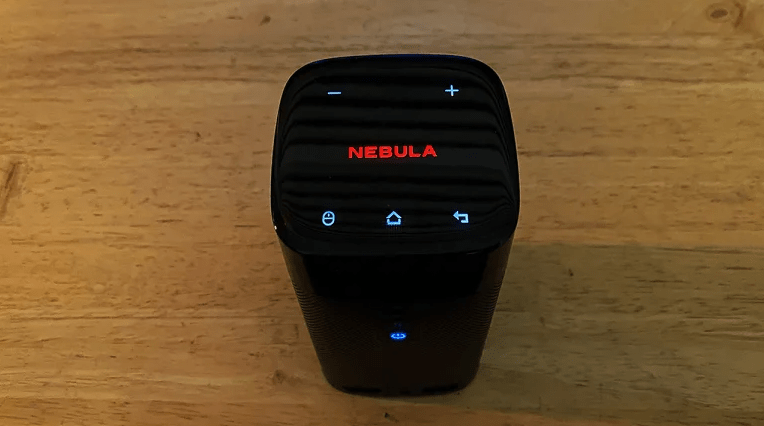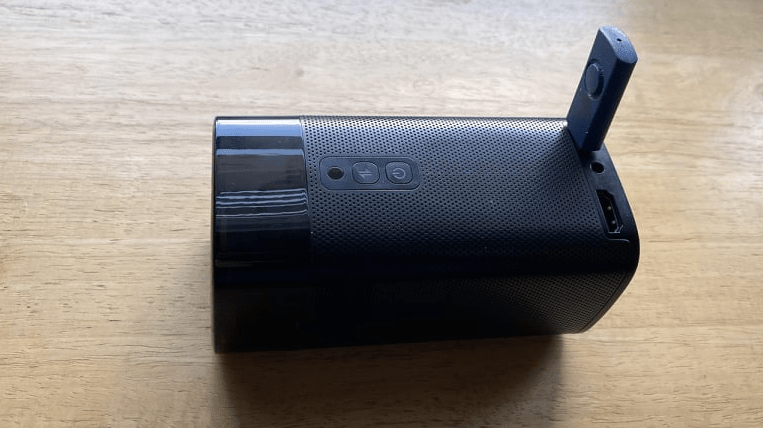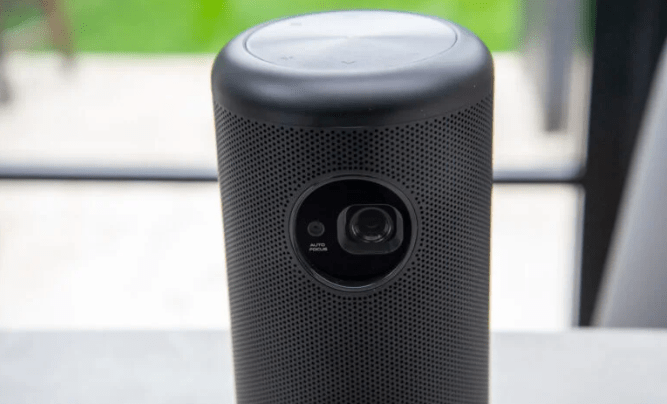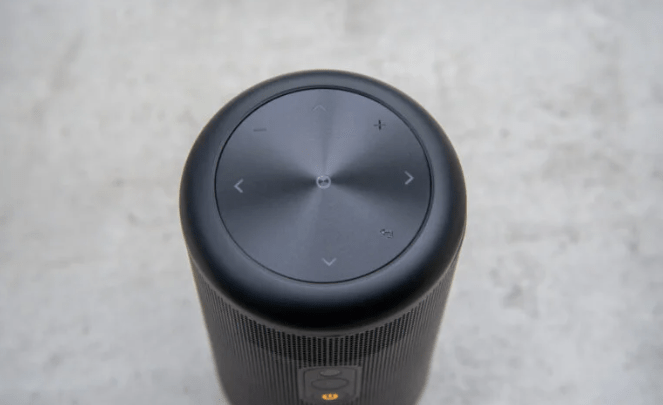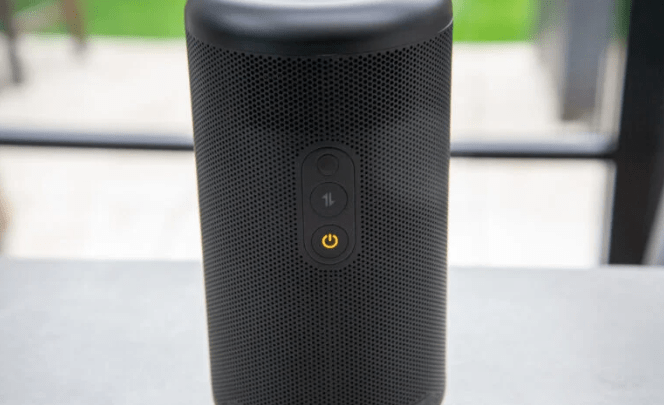At gagadget.com, your trust is our priority. We follow strict quality standards in our research, tests, and analysis of video projectors, to give you the best experience. Learn more
Nebula Apollo vs Nebula Capsule Max
Hi everyone! Today, I'm comparing two popular portable projectors from Anker: the Nebula Apollo and the Nebula Capsule Max. Both pack Android smarts, long-lasting batteries, and good sound into compact packages. But they also have some key differences in resolution, brightness, throw ratio, and more that could make one a better fit for your on-the-go entertainment needs.
I've spent quality time with both the Apollo and Capsule Max, evaluating picture quality, ease of use, audio performance, and overall value. In this in-depth head-to-head, I'll highlight how they perform in real-world conditions to help you decide which one deserves a spot in your bag. Let's get started!
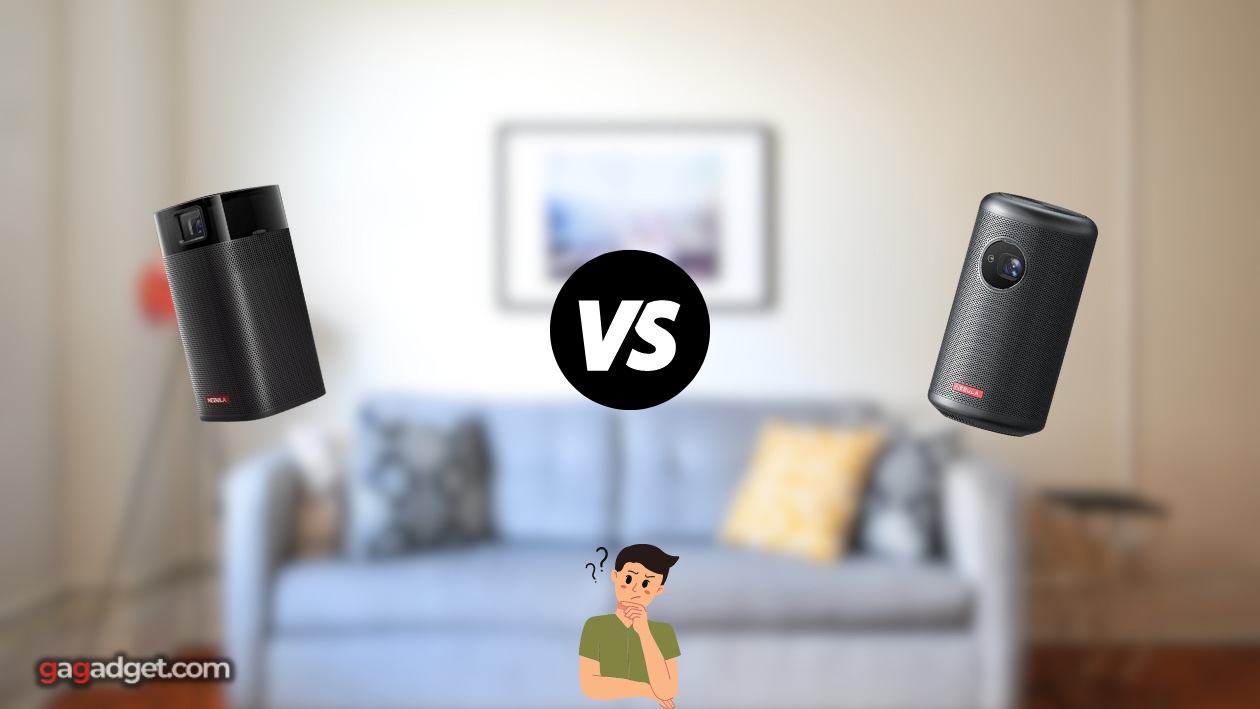
Nebula Apollo vs Capsule Max: Quick Overview
Here are the key takeaways for those short on time: The Nebula Apollo and Capsule Max are very similar ultra-portable projectors overall. Both use DLP tech, have LED light sources rated for 30,000 hours, and run Android OS for streaming. The main differences are resolution (480p on Apollo vs 720p on Capsule Max), brightness (200 vs 200 ANSI lumens), and sound (6W vs 8W speakers). The Capsule Max also adds auto focus.
I recommend the Nebula Capsule Max for most buyers. The higher 720p resolution, more powerful speaker, and convenient auto focus are worth the slight price premium for a meaningfully sharper, richer portable cinema experience. But if you mostly watch older 480p content or want the absolute smallest form factor, the Apollo is still a very capable and compact choice.
Table of Contents
- Nebula Apollo vs Capsule Max: Full Comparison
- Nebula Capsule Max vs Apollo: Design
- Nebula Apollo or Capsule Max: Owner Reviews
- Nebula Apollo and Capsule Max Alternatives
- Should You Buy the Nebula Apollo or Capsule Max?
Nebula Capsule Max vs Apollo: Comparison
| Specs | Nebula Apollo | Capsule Max |
| Image |
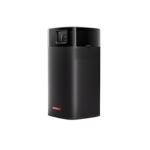
|

|
| Resolution | 854 x 480 (WVGA) | 1280 x 720 (HD) |
| Brightness | 200 lumens (ANSI) | 200 lumens (ANSI) |
| Display Tech | DLP (1 x 0.2" DMD) | DLP (1 x 0.2" DMD) |
| Light Source | LED (30,000 hours) | LED (30,000 hours) |
| Image Size | 40" - 100" | 20" - 100" |
| Throw Distance | 3' 7" - 9' 6" | 1' 11" - 9' 6" |
| Throw Ratio | 1.30:1 | 1.30:1 |
| Focus | Manual | Auto |
| Keystone/Zoom | Digital/No | Digital/No |
| Integrated Speaker | 6W | 8W |
| Battery Life | 4 hours | 4 hours |
| Android Version | 7.1 | 8.1 |
| Dimensions (HWD) | 2.7" x 2.7" x 5.1" | 3.1" x 3.1" x 5.9" |
| Weight | 1.1 lbs | 1.5 lbs |
| Release Year | 2019 | 2019 |
Starting with picture quality, the main difference between the Nebula Apollo and Capsule Max is resolution. The Apollo tops out at 854 x 480 pixels, also known as FWVGA or 480p. That's equivalent to old DVD quality and noticeably softer than true HD. The Capsule Max, on the other hand, projects a 1280 x 720 pixel image - aka 720p. While not full 1080p, it's still a substantial upgrade in sharpness and detail over the Apollo.
In real-world viewing, the Capsule Max's higher pixel count was appreciated when watching newer content like HD YouTube videos, movies on Disney+, and games from my Nintendo Switch. Small text was easier to read and I noticed more fine details in faces and landscapes. The Apollo's 480p image was certainly watchable (and a huge step up from my phone screen) but nowhere near as crisp - think early Roku boxes or a mid-tier smartphone from 5 years ago.
When it comes to brightness, both projectors are rated at 200 ANSI lumens. I found that number roughly matched my experience - enough for a 50-60" at night with the curtains drawn, but fairly washed out with any ambient light. The Apollo seemed ever-so-slightly dimmer side-by-side, likely due to its lower native resolution, but you'd be hard pressed to tell without a direct comparison. Both greatly benefit from a portable ALR screen if you'll be using them in non-darkened spaces.
The Apollo and Capsule Max share the same 1.3:1 throw ratio, allowing for 40-100" image sizes from roughly 4-10 feet away. I was easily able to fill a 60" screen from my coffee table and an 80" from the back of the room. The Capsule Max does have a slightly shorter minimum throw - 1.9' vs the Apollo's 3.6' - making it better suited for smaller spaces and screens. But both offer good flexibility in a very compact form factor.
Focus must be adjusted manually on the Apollo via a dial next to the lens. It's a bit tricky to dial in at first but holds position well once set. The Capsule Max has the welcome addition of auto focus, which quickly optimizes sharpness at the push of a button. It's a nice convenience, especially if you'll be moving the projector around a lot. Both allow for +/- 40-degree digital keystone adjustment to square up the picture, but note that this slightly degrades resolution.
Audio is another area where the Capsule Max beats out the Apollo. It features a larger 8W speaker vs the Apollo's 6W, resulting in louder, fuller, and clearer sound. Both are impressive for the size and fine for casual viewing, but the Max's audio is less strained at high volumes and delivers punchier bass. If you'll be using your projector mostly for movies and TV shows, it's a meaningful upgrade.
The Apollo and Capsule Max have the same 4-hour battery life, allowing for 2 average length movies between charges. I consistently hit that mark as long as I kept the Apollo on battery saver mode and the volume/brightness at 50%. The Capsule Max's larger capacity cell balanced out its higher res display and speaker for similar endurance. Both charge via the included USB-C charger in around 2 hours.
Finally, both projectors run Android OS with the "Nebula Manager" launcher pre-installed for streaming apps and settings. The Apollo uses an older 7.1 build while the Capsule Max gets 8.1. Practically speaking, I didn't notice a huge difference in performance. Netflix, YouTube, Hulu, and other major apps ran smoothly on either projector, with only occasional stutters. The included remote is also identical, with dedicated buttons for the core controls and a directional pad for navigation.
Nebula Capsule Max vs Apollo: Design
At first glance, the Nebula Apollo and Capsule Max look like slightly different sized soda cans, or perhaps small portable speakers. Both are roughly cylindrical with a black aluminum chassis, perforated endcaps, and a lens and controls on the side.
Nebula Apollo Design
Nebula Capsule Max Design
The Apollo measures just 2.7" in diameter and 5.1" tall, allowing it to fit easily in a jacket pocket or purse. At 1.1 pounds, it's also one of the lightest portable projectors I've tested. The rubberized base keeps it from rolling around on uneven surfaces. Zoom, keystone, input, and volume buttons flank the lens, along with a manual focus dial and a touch panel for navigating Android.
The Capsule Max is a bit taller and thicker at 3.1" x 5.9". It also weighs about 50% more at 1.5 pounds, but still feels very well balanced for its size. Controls are simplified to just power and a multi-function button - all other adjustments are made via the included remote. The lens is surrounded by an auto focus sensor array, and a single USB-C port handles charging, data, and audio out duties.
Nebula Apollo or Capsule Max: Owner Reviews
Let's see what actual buyers have to say about their experiences with the Nebula Apollo and Capsule Max projectors:
Nebula Apollo Owner Reviews
Praises: "I can't believe how small and light this thing is - it disappears in my backpack and I can set it up in seconds anywhere I go. The image is super clear for the size too."
"The Android interface is snappy and easy to navigate. I can quickly switch between Netflix, YouTube, and Plex without any hitches or crashes."
***
Drawbacks: "The 480p resolution is pretty soft, especially when projecting larger than 60 inches. Newer movies and games look a bit blurry."
"The speaker is tinny and underpowered. It's fine for a quick YouTube clip but for anything longer I have to connect an external speaker to hear clearly."
Nebula Capsule Max Owner Reviews
Praises: "The 720p picture is a huge step up from my old WVGA pico projector. I can actually read small text now and HD content looks great even at 80-100 inches."
"Auto focus and keystone are awesome - I get a crisp, squared up image every time without any fiddling. The battery life is also fantastic, I can usually get through a double feature before needing to plug in."
***
Drawbacks: "It struggles in rooms with any ambient light. The image looks washed out and low contrast unless I'm in total darkness."
"The fan noise is definitely noticeable during quiet scenes. It's not a deal breaker but I wish there was a way to adjust the speed or put it in a silent mode."
Overall, Nebula Apollo owners love the uber-compact size, easy streaming interface, and decent picture for casual viewing. Common complaints include the low 480p resolution, weak built-in speaker, and lack of brightness in non-dark environments.
Capsule Max reviewers frequently praise the sharp 720p image quality, convenient auto focus and keystone, and all-in-one Android experience. A few users note underwhelming contrast and noticeable fan noise, but most feel the richer picture and sound make it a worthwhile upgrade over the Apollo.
Nebula Apollo and Capsule Max Alternatives
If you're not totally sold on either the Apollo or Capsule Max, here are a couple of other well-regarded portable projectors in the same class:
- AAXA P7 Mini: A super-compact 1080p DLP projector with Android 10, dual 2W speakers, a 90-minute battery, and both auto and manual focus;
- ViewSonic M1 Mini Plus: An ultra-slim WVGA projector with a swivel stand, Wi-Fi, Bluetooth, USB-C, a 2.5-hour battery, and Harman Kardon speakers.
The AAXA P7 Mini is one of the few pico projectors with true 1080p resolution, making it a compelling step up from the Apollo or Capsule Max. It also runs a newer Android 10 OS for smoother performance and wider app compatibility. The main trade-offs are a bulkier design (though still coat pocket-able), much shorter 90-minute battery life, and no auto keystone correction.
On the more affordable end, the ViewSonic M1 Mini Plus delivers a similarly bright and sharp WVGA picture to the Apollo in an even slimmer sub-1" thick chassis. You lose out on Android OS, but Wi-Fi screen mirroring and a healthy selection of inputs keep it fairly flexible. The integrated swivel stand, premium Harman Kardon speakers, and LED light ring are also unique touches.
Should You Buy the Nebula Apollo or Capsule Max?
After thorough testing, it's clear the Nebula Apollo and Capsule Max are two of the most capable and convenient ultra-portable projectors on the market. With their built-in Android TV, long-lasting batteries, decent speakers, and highly compact designs, both make it easy to enjoy big screen content anywhere you can find a blank wall and some shade.
For most buyers, I recommend spending the extra money on the Capsule Max. Its 720p resolution is a very noticeable step up from the Apollo's 480p in terms of image sharpness, text legibility, and overall clarity. The brighter 8W speaker, more reliable auto focus, and newer Android 8.1 OS are also appreciated upgrades - especially for frequent movie watching or presenting.
That said, if you primarily view older standard def content, need the absolute smallest form factor, or are on a tighter budget, the Apollo remains a very solid choice. It projects a watchable (if softer) image, runs the same core Android apps, and still packs a convenient 4-hour battery life into an even more pocket-friendly shell. Just be prepared to use external speakers or headphones for the best audio experience.
Ultimately, your decision comes down to how portable you need your projector to be and how much you value the crisper 720p image. If you prioritize maximum mobility, go Apollo. If you want the better all-around viewing experience and can stretch your budget, go Capsule Max. Either way, you'll be enjoying easy access to supersized streams and media wherever life takes you.
Thanks for reading! Let me know if you have any other questions about the Nebula Apollo vs Capsule Max or pico projectors in general. Until next time, happy watching!
Read More:
